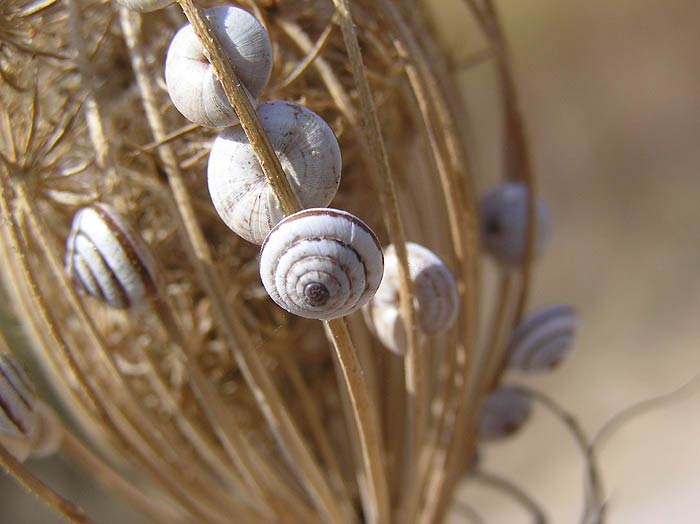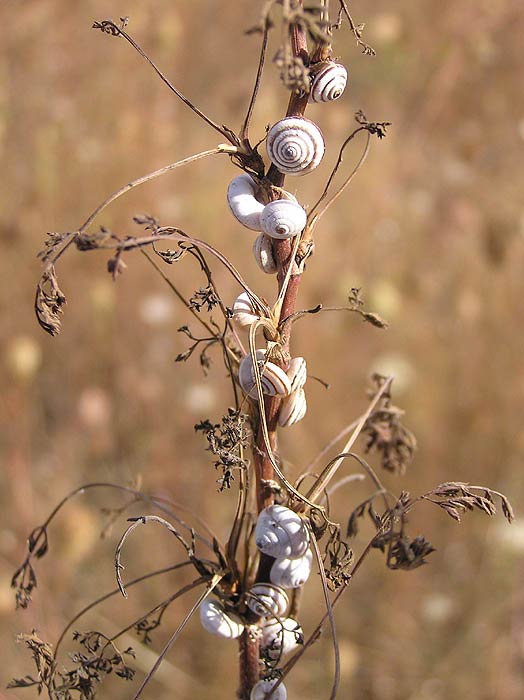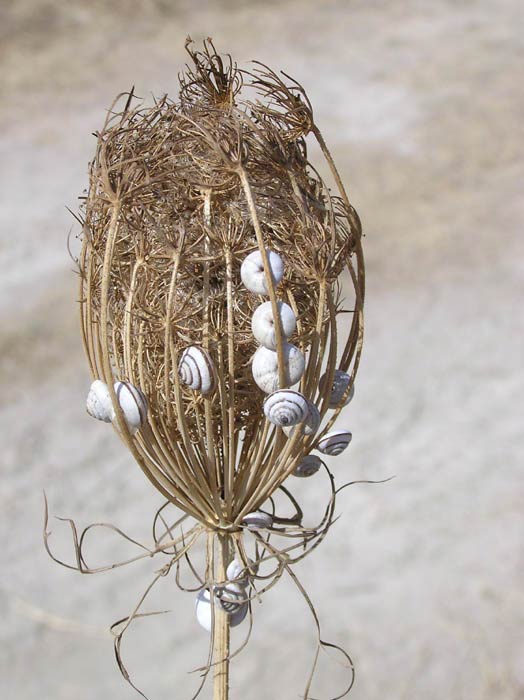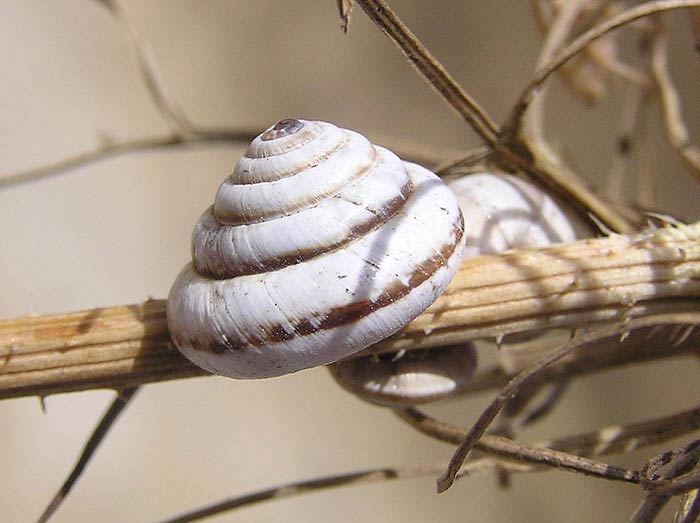Trochoidea pyramidata
|
Trochoidea pyramidata. (Photo: © J. Novak, www.biolib.cz) |
|
Trochoidea pyramidata. (Photo: © J. Novak, www.biolib.cz) |
|
Trochoidea pyramidata. (Photo: © J. Novak, www.biolib.cz) |
|
Trochoidea pyramidata. (Photo: © J. Novak, www.biolib.cz) |
|
Trochoidea pyramidata. (Photo: © J. Novak, www.biolib.cz) |
Family
Hygromidae
Species
Trochoidea pyramidata (Draparnaud, 1805)
Common name
Pyramid snail
Description
The shellShell:
A hard, inflexible, calcareous or chitinous structure that vary in size and may either completely encasing the animal, covering some part of it or be internal.
of this species ranges from 6-9 mm high and 8-11 mm wide with 4.5-7 whorlsWhorls:
Pleural of whorl. A whorl is a complete spiral turn/growth of the shell of a mollusc. The whorls are counted from the apex outwards.
. The slightly glossy, white shellShell:
A hard, inflexible, calcareous or chitinous structure that vary in size and may either completely encasing the animal, covering some part of it or be internal.
may have brown stripes or spots. The apertureAperture:
The major opening of a shell that the body of the animal may be retracted.
(mouth) of the shellShell:
A hard, inflexible, calcareous or chitinous structure that vary in size and may either completely encasing the animal, covering some part of it or be internal.
has a white lipLip:
The margin of the aperture, which may be sharp or thickened depending upon the species (Also see apertural lip).
inside. The umbilicusUmbilicus:
A navel-like indentation or depression in the center of the shell. It may be described as open (inside of columella visible), partially closed (partly covered by base of aperture) or completely closed (not visible). The width of the umbilicus is a measure of its greatest diameter.
(navel) is narrow in this species. The body of the animal is tan to grey.
Native range
Western Palearctic region
Distribution
North America:
- U.S.: North Carolina
Europe
Synonyms
- Helix nova Paulucci, 1879
- Helix radiata Retowski, 1889
- Helix platiensis Sturany, 1902
- Helix vernicata Westerlund, 1902
- Helicella subplatiensis Germain, 1936
References
Abbott 1989Abbott 1989:
Abbott, R.T. 1989. Compendium of landshells. A full-color guide to more than 2,000 of the World’s terrestrial shells. American Malacologists, Inc., Melbourne, FL and Burlington, MA. pp. 240.; Robinson and Slapcinsky 2005Robinson and Slapcinsky 2005:
Robinson, D.G. and J. Slapcinsky. 2005. Recent introductions of alien land snails into North America. American Malacological Bulletin 20: 89-93.






